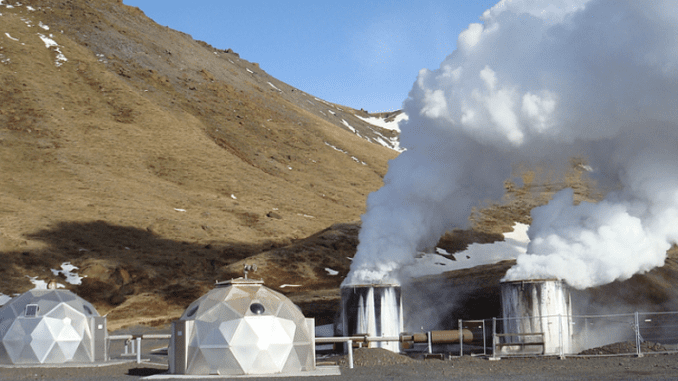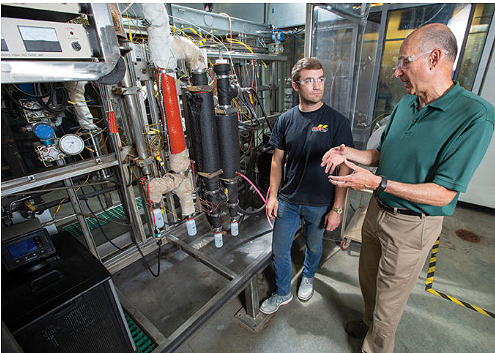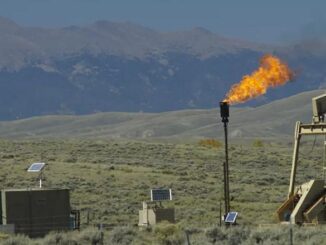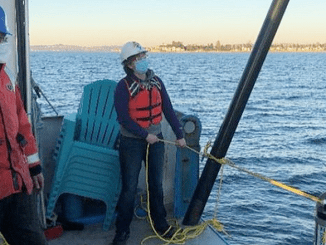
LOS ANGELES, California, April 22, 2022 (ENS) – In celebration of Earth Day, 15 teams have been designated as million-dollar Milestone winners in the $100 Million XPRIZE Carbon Removal competition. XPRIZE, a non-profit that hosts competitions to accelerate breakthroughs that benefit humanity, and the Musk Foundation announced the winners today.
Selected from a field of 1,133 teams, each of the 15 Milestone winners has been awarded $1M to recognize their efforts to date and support their continued work to scale solutions.
The winning entrants must demonstrate solutions that can pull carbon dioxide directly from the atmosphere or oceans at a scale of at least 1,000 tons per year. Entrants must also model their costs and demonstrate a possibility to scale up their approach to gigatons of carbon storage in the future.
In 2025. XPRIZE will hand out a $50 million grand prize to the top entrant, along with other $30 million prizes to other teams, an acknowledgement that it will take a variety of carbon removal approaches to avert an impending climate crisis.
This $100 million competition, funded by Elon Musk and the Musk Foundation, is the largest incentive prize in history, and the XPRIZE Carbon Removal teams represent the largest collection of innovators working on carbon removal.

Elon Musk said, “We want teams to build real systems that can make a measurable impact at a gigaton level. Whatever it takes. Time is of the essence,” declared the co-founder and CEO of Tesla, SpaceX, Neuralink and The Boring Company.
The 15 milestone million dollar winners are from nine countries: Australia, Canada, France, Iceland, Kenya, the Netherlands, the Philippines, the United Kingdom and the United States.
Dr. Marcius Extavour, chief scientist and vice president of climate and environment at XPRIZE, said, “One year in, we already see the positive impact of the prize: hundreds of groups working on a wide range of promising carbon removal solutions. Not just ideas, but development and deployment plans, which is exactly what we need.”
“The pace and depth of initiatives in carbon removal and other crucial climate solutions has never been greater, but we still need more—more and deeper emissions cuts, and more reliable, validated carbon removal solutions. That’s why we launched this prize in the first place,” Dr. Extavour said.
The XPRIZE proposals were screened and ranked by 70 expert reviewers for scientific validity; they selected the top 60 teams. A panel of judges then dove deep into operations plans, performance data, life cycle analysis and cost estimates to select the Milestone award winners.
Carbon Removal Can Take Many Forms
The Icelandic company Carbfix, in collaboration with its partners, has won two separate Milestone prizes.
Carbfix is the world‘s first CO2 mineral storage operator, having mineralized CO2 underground in Iceland for 10 years using proprietary technology. The Carbfix process injects CO2 dissolved in water into basaltic rocks, where it turns to stone in under two years through a technology that imitates and accelerates natural processes, providing a permanent and safe carbon storage solution.
For its two winning submissions, Carbfix partnered with Heirloom Carbon Technologies based in San Francisco, and also with Verdox, an electric carbon capture and removal company based in Boston. Each of the two partnerships won a million dollar Milestone prize.

Carbfix provides the company’s technology of safe and permanent underground mineralization to sequester the CO2 captured by Verdox’s and Heirloom’s novel and innovative carbon capture technologies.
“We’re immensely honored to receive such a solid recognition in this prestigious and highly competitive global competition,” said Edda Sif Pind Aradóttir, CEO of Carbfix. “We’ve already been applying our method of underground CO2 mineralization for 10 years. Presently, we are aiming for significant upscaling of our tried and tested technology, an ambition which will be greatly supported by our XPRIZE success and our excellent partnerships in those projects.”
Carbfix is preparing for the construction of a CO2 storage and disposal facility – the first of its kind in the world – in Straumsvík cove, on the Reykjanes peninsula in southwest Iceland. The facility, Coda Terminal, will receive CO2 from Northern Europe by ship. It is expected to create 600 jobs.
“The CO2 will be sourced from industrial emitters in Northern Europe and will be injected into the basaltic bedrock where it rapidly turns into stone via the Carbfix technology,” Carbfix said in a statement. “At full scale, the Coda Terminal will provide an annual storage amounting to three million tonnes of CO2 .”
Heirloom acknowledged in a statement today that accelerating DAC deployments such as Heirloom’s “will rely on the development and expansion of new renewable energy infrastructure and CO2 storage infrastructure, incentivization to participate in voluntary carbon markets, and government policy to support all types of projects, including direct air capture.”
One of today’s winners is an Iowa State University research team that helped develop a demonstration-scale pyrolyzer capable of sequestering thousands of tons of carbon dioxide a year.

The milestone prize provides $1 million to the carbon removal team at the Iowa State Bioeconomy Institute to help advance its vision of using pyrolysis to remove carbon dioxide, a major greenhouse gas, from the atmosphere, thus slowing climate change.
During pyrolysis, biomass such as crop residues is heated in the absence of oxygen, yielding a carbon-rich material known as biochar, a form of charcoal.
Pyrolysis also produces a thick, viscous liquid known as bio-oil, which can be refined into renewable diesel fuel or bio-asphalt, a renewable substitute for petroleum-based asphalt.
From Nova Scotia, Canada, Planetary Technologies won $1 million for its technology that removes carbon from the atmosphere, cleans mine waste, produces green hydrogen and addresses ocean restoration.
Canada has many mines and Canadian companies mine for valuable minerals throughout the world. Planetary’s proprietary technology purifies mine waste into a mild, nontoxic antacid which is then released into the ocean through existing, regulated outfalls such as wastewater or stormwater streams where it is consistently monitored.
When mixed with seawater, the antacid restores the ocean’s pH levels and accelerates the ocean’s natural process of pulling carbon dioxide from the atmosphere. Restoring the ocean’s balance also helps to reverse the damage caused by ocean acidification resulting from climate change, the company says.
As the mine waste is purified, clean hydrogen is produced as a by-product, allowing hard-to-decarbonize industries to limit their use of fossil fuels. The purification process also extracts metals that can be used in batteries, another important tool for a future low-carbon economy.
Planetary plans to open pilot plants in Quebec, Nova Scotia, and the UK in late 2022, which will demonstrate a scaled version of its patented process.
From Eindhoven in The Netherlands comes another winner, Carbyon.
Carbyon’s solution first saw light in 2018 at Dutch research institute TNO, the Netherlands Organisation for applied scientific research. While working there, Hans De Neve investigated the use of thin film technologies for novel solar PV materials.
Now, Carbyon uses a CO2 adsorbing substance to modify fiber membrane material with a huge internal surface, leading to a highly efficient CO2 capturing capacity directly from the air.
Those are just a few of the 15 Milestone prize winners. The complete list is here:
Calcite: Uses the natural carbon absorbing properties of calcium hydroxide to remove CO2 from the air
Carbyon: “A fast swing process” uses an engineered material to capture CO2
Heirloom + Carbfix: Sequestering carbon in naturally occurring minerals by turning the CO2 to stone
Project Hajar: Mineralization using peridotite injection process
Sustaera: “Direct air capture 2.0” with cheaper chemical reaction pathways
Verdox + Carbfix: “Electroswing adsorption” to fix CO2 as stone with 70 percent less energy
Bioeconomy Institute at Iowa State U.: Uses pyrolysis to refix outgoing plant-based carbon
Global Algae: Algae farms that naturally capture CO2 from the air
NetZero: Also pyrolysis
PlantVillage: Helps farmers in Africa to adapt to climate change
Takachar: Mobile “oxygen-lean torrefaction” to convert waste biomass to fuel and/or fertilizer
Captura: Extracting CO2 directly from seawater by means unspecified
Marine Permaculture: “Deepwater-irrigated, open-ocean seaweed mariculture”
Planetary: Turns mine waste into a “mild, nontoxic antacid” that helps restore natural ocean pH
Carbin Minerals: Using mine tailings for a mineralization process
Featured image: Reykjavik Energy’s Hellisheidi geothermal power plant, southern Iceland. March 29, 2010 (Photo by ThinkGeoEnergy)



